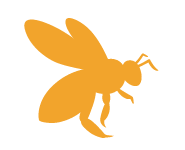
Japanese Honeybee Project
Since 2009, Kajima has been conducting “Japanese Honeybee Project”, which is breeding honeybees at company-owned facilities.
The purposes of the project are to evaluate the influence of their ecological activities, such as pollination, on the surrounding vegetation, and to give the local children an opportunity to have environmental educations.
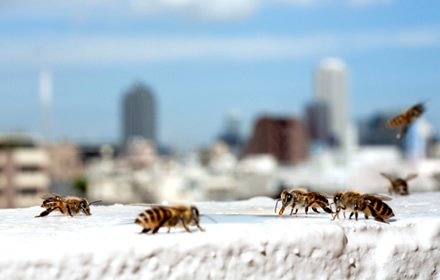
Why did we adopt native Japanese honeybees among all kinds, while the general Japanese beekeepers are breeding Western honeybees due to their higher productivity of honey than Japanese honeybees’?
This is because Japanese honeybees have a higher suitability for Japanese climate and potential to protect themselves from natural enemies such as hornets.
We breed four colonies (groups) of honeybees. At least once a week, we examine the bees’ health and check whether there is a sign of swarming in the hive. Every year, we collect only a small amount of honey from each colony, which is about 10 kg, not to affect the growth of the honeybees.
Every year, we are providing an environmental education program to the preschool children at the facilities described above where honeybees are bred.
The program consisting of five classes a year, supports not only the indoor education, such as learning the ecology of honeybees and the breeding tools, but also the outdoor one, such as observing beehives and exploring the nectar source plants in the neighborhood.
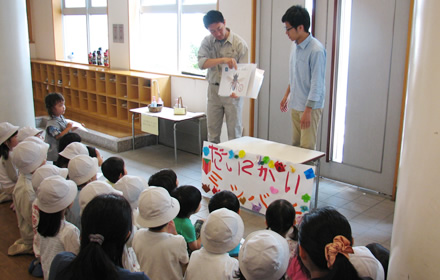
During the observation of the beehives, honeybees going out to collect honey, those returning home with pollen dumplings stuck on their legs, and those guarding their home could be found. Pollen Dumpling is the mixed food made from pollen and honey, and it is given to larvae.
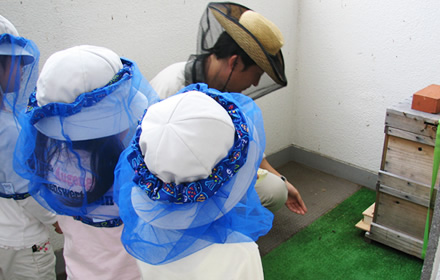
We also observe Western Honeybees and Cabbage Butterflies visiting flowers of clover at the neighboring park, and Wandering Glider and Damselflies flying around the pond.
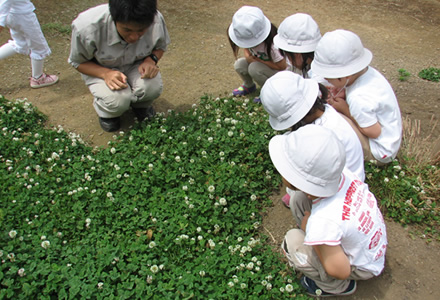
To explore the nectar source plants we go on adventures to the slightly distant parks. Even on the way to the park, we can observe Japanese Honeybees and Large Carpenter Bees are visiting privets in gardens of private houses.
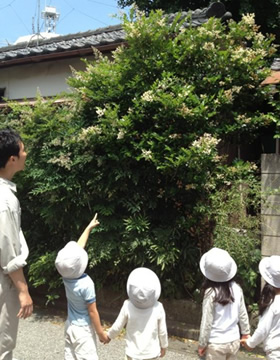
We play some games in which the preschool children can learn about plants’ names and roles. For example, “Leaf Bingo!” is a kind of Bingo game. In “Leaf Bingo!” the kids try to find many kinds of leaves, each of which has the same appearance as that of the pictures drawn in each cell on the Bingo card.
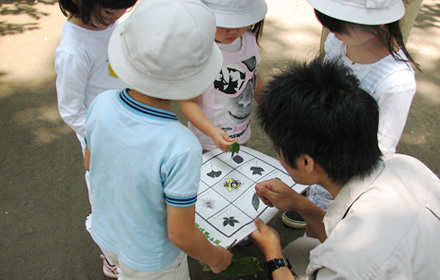
By comparing the collected leaves and those printed on a bingo card, they learn the names and features of plants and the fact that there are many kinds of shapes.
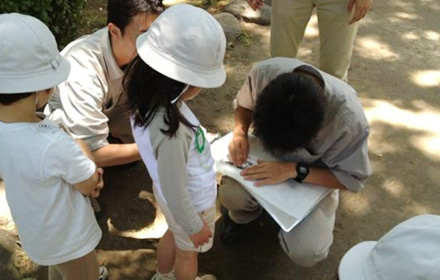
In this way, during the environmental education program for preschool children since 2008, kids are enjoying learning about nectar source plants, the ecology of honeybees, and honeycomb structure which is the structure of beehives.

Urban Grazing Project
(Using goats and chickens for greenspace management)
Kajima started the “Urban Grazing project using goats and chickens” at Kajima Corp.’s employee housing complex in 2010.
We are conducting a research to realize “Triple-Zero” that is, “zero noise, zero emission of carbon dioxide, and zero discharge of plant waste”, which can not be attained by that with mechanical mowers.
Two female goats, one named Sarah, has a blue collar and the other one named Ellie, has a red one. They are grazing the courtyard at Kajima Corp.’s employee housing complex in Tokyo and farmland in Saitama, traveling back and forth between them.
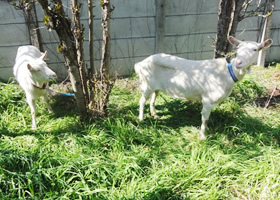
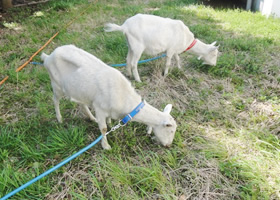
One goat usually weeds the area of about 10m2 a day. Because the goats weed quietly without any mechanical noise that a power lawn mowers make and they almost have no smell, there has been no trouble or complaints from the local residents, even though it is conducted right in front of their porch.
And at the same time, Silk Fowls (indigenous chickens) are serving as assistants to goats and grazing the courtyard by eating herbs such as Chameleon and Mock Strawberries left uneaten by goats. Thanks to goats, Silk Fowls can concentrate on their work without fears from their enemies, such as cats and crows.
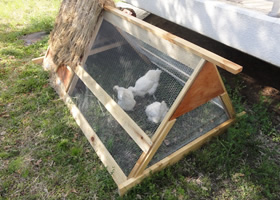
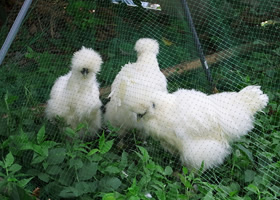

In greenspaces which have been grazed for 3 consecutive years by goats and Silk Fowls, many kinds of wild herbs which have not been seen in the first and the second year, have come to exist, because the cover of tall perennial weeds, such as the Canadian Goldenrod blocking the sunlight decreased and the sunlight reached the ground surface.
Allium macrostemon, which can be eaten tastily in raw or served in miso-soup and the Japanese mugwort which can be eaten tastily served in rice porridge are the examples. Such a landscape that edible plants like fruits and vegetables are growing is called “edible landscape”. The“ Urban Grazing Project” realizes an edible landscape in double meanings, because both milk and egg from animals and edible wild herbs can be obtained.
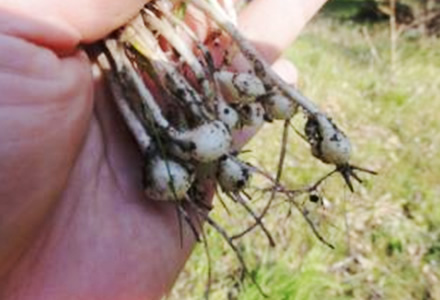
We are outputting the information about our project by summarizing and publishing the results of the research as academic papers.
In an article “A study on urban greenspace management activity using goats” published in 2012, the effect of grazing with goats, the influences on the local residents and the methods of greenspace management are reported with quantitative data.
Examples are the followings. The cover of invasive perennial weeds like the Canadian Goldenrod has declined and that of native grass like Carex leucochlora(type of sedge) has increased instead, and the vegetation has changed dramatically.
According to the questionnaire survey of the local residents, they were not annoyed by the smell and noise of the goats, and what is more, the grazing by goats leads to the increase of conversation regarding the natural environment at their home. It turned out that the grazing by goats is the environment friendly method for greenspace management because of the low impact to the environment, and also a method that enlightens environmental issues to the local residents.

We would like to keep on this project, extend our knowledge, and make every effort to promote the public awareness of greenspace management using living creatures.

